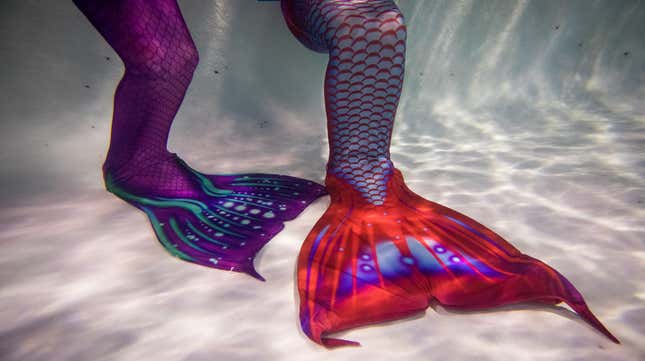Mermaid Sex: Let Us Consider All the Ways
Having now spent just over an hour sorting through the internet’s mer-sex speculation, I can report back.
In Depth

There I was this morning, drinking my coffee and innocently reading the news, when I came across a Daily Beast headline featuring the words “very horny” and “Robert Pattinson” and “mermaid”—and I did what any normal person would do: I clicked. Which is how I learned, without really intending it, that Pattinson has a new film called The Lighthouse, and that it involves human-on-mermaid sex. Before I knew it, I was reading about the movie’s graphic depiction of “elaborate” mermaid genitalia—and then I was thinking about mer-vulvas and mer-dick and mer-sex and mer-babies.
I am, reassuringly, far from the first person to consider such things, as evidenced by a sample of Quora and Reddit queries (including one that reads, very thoughtfully, “I’m going to have sex with a mermaid tomorrow. What should I know about mermaid reproductive anatomy to make it as enjoyable as possible for both of us?”). Having now spent just over an hour sorting through the internet’s mer-sex speculation, I can report back: theories abound, and I am all too thrilled to share them.
“If we’re gonna imagine mermaids fucking, it better be tawdry and debauched, not some procreative, drive-by fertilization.”
A few years ago, HelloGiggles admirably asked a marine biologist to come up with a mer-sex hypothesis grounded in models of fish reproduction. (The Lighthouse took a similar approach: director Robert Eggers tells the Daily Beast that “the design of the mermaid’s” vulva, which was constructed from silicone, was “based on shark labias.”) George Parsons of the Shedd Aquarium in Chicago theorized that, in paraphrase, “mermaids and mermen would all have a slit, about halfway down their fin, from which they would release their eggs and sperm, respectively.” This theory may be scientifically sound, but I think we can all agree that fish sex is boring as shit. If we’re gonna imagine mermaids fucking, it better be tawdry and debauched, not some procreative, drive-by fertilization.
Others have suggested a different underwater comparison: Male dolphins have penises that fully retract into a small slit and when they emerge—oh god, they are monstrous and pink and I do not recommend a Google Images search. Female dolphins have a single, larger slit that contains both the vagina and the anus (while male dolphins have a separate anal slit). A Redditor raised this fun fact in a mer-sex thread before writing of mermaids: “On the plus side, it’s like having vaginal and anal intercourse at the same time. On the minus side, it’s like having vaginal and anal intercourse at the same time.” Moving right along.
-

-

-

-

-

-

-

-

-

-

-

-

-

-

-

-

-

-

-

-

-

-

-

-

-

-

-

-

-

-

-

-

-

-

-

-

-

-

-

-








































